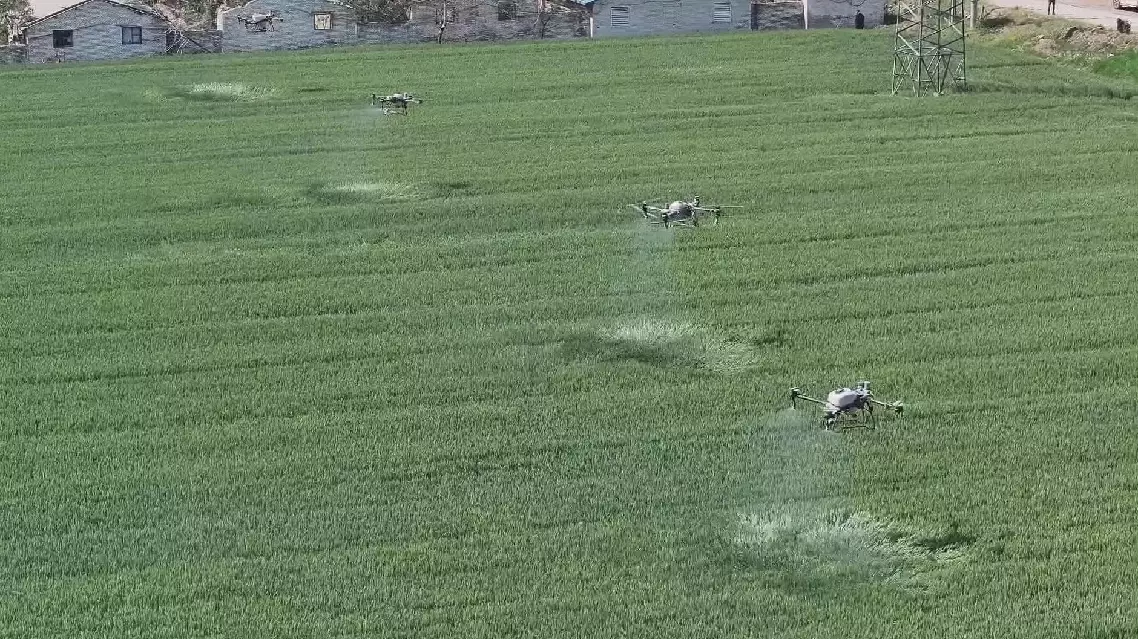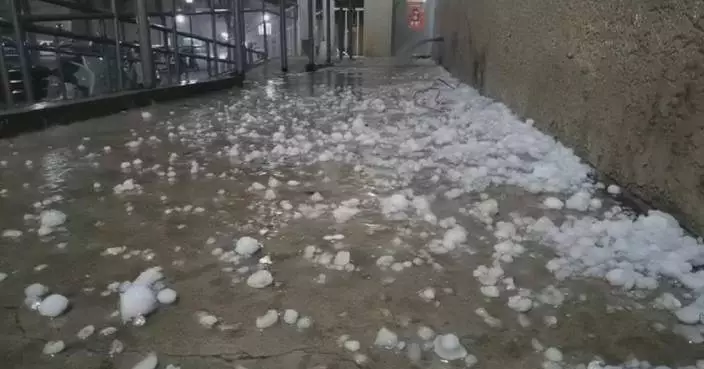Photographers tracking the stunning Qiantang tidal bore in east China's Zhejiang Province this year have not only captured spectacular footages of the natural phenomenon, but also seized the presence of migratory birds in their viewfinders.
Every year around the Mid-Autumn Festival, which falls on Sept 17 this year, the Qiantang River in Zhejiang presents visitors with one of the world's three most spectacular tidal bores, alongside the Amazon River and the Ganges. Full of expectation, tourists from across China gather along the riverside, seeking to experience the marvelous natural scene in-person.
This year, the breathtaking river spectacle in Haining City was enhanced by several birds flying off or chasing the tidal bore of the Qiantang River at low altitude as it surged.
"I grew up by the Qiantang River and have been photographing tides for more than 20 years. I have used my camera to record the changes on both sides of the river. The diversity and quantity of migratory bird species along the river are progressively expanding. The river is becoming more and more attractive to migratory birds and I feel very proud," said Ding Kuai, a photography enthusiast.
Researchers have also closely monitoring the population and well-being of these bird species with binoculars and cameras and kept documenting them.
"Due to Haining City's position on a significant migratory bird pathway and the superior ecological environment of the Qiantang River with abundant fish resources, a substantial number of migratory birds every year choose to have feasts there during the migration season. The increasing number of bird species recorded comes from Haining City's escalating focus on biodiversity conservation efforts as well as the observation by a group of photography enthusiasts in the city," explained Wei Huiyu, assistant researcher of the Nanjing Institute of Environmental Sciences (NIES) of the Ministry of Ecology and Environment.
According to the the latest bird monitoring findings released by Haining City, a total of 185 bird species have been recorded there so far.

Spectacle of birds flying over tidal bore spotted on Qiantang River
Regions across China are leveraging drones and advanced farm machinery to manage grain production.
There are three different grain production seasons in China: summer grain, early rice and autumn grain, accounting for about 21 percent, 4 percent and 75 percent of the annual grain output respectively.
Traditionally, the summer harvest spans from May to late June in China every year, with most of the work focusing on reaping winter wheat, a staple grain crop, and rapeseed.
The winter wheat planted in more than 250,000 mu (16,667 hectares) of fields in Pinglu County, Yuncheng City of north China's Shanxi Province is now entering the ripening period which is crucial for the grain formation.
Located in a mountainous region, the county has scattered plots which poses challenges to manual pest and disease control. Facing the challenge, the county's agricultural department has designated the scattered plots as specific areas for drone spraying, combining human efforts with drone technology to ensure that no part of the field is left untreated.
The local authorities have deployed drones to cover over 30,000 mu (2,000 hectares) of crop fields per day. Flying over the fields, the drones are spraying pesticides and fertilizer to ensure the health and productivity of wheat crops and a bountiful summer grain harvest.
As the summer grain harvest draws near, major agricultural provinces, including Sichuan in southwest China, Hubei in central China, and Jiangxi in east China, have already begun harvesting rapeseeds.
In Zitong County, Mianyang City, Sichuan Province, rapeseed farmers are reaping a bountiful harvest. In a local agricultural park, six combine harvesters can be seen shuttling across the fields, with their gears whirring as rapeseed stalks being fed into the machines.
The entire process, from harvesting to threshing, separating, and crushing, is fully automated. The crushed rapeseed shells and straw are evenly spread across the fields, while the harvested seeds are transported to drying facilities before being sold or processed into oil for consumption.
This year, Zitong County has deployed over 1,200 harvesters to assist local farmers, with the mechanization rate in harvesting exceeding 80 percent, leading to a 30 percent reduction in harvesting costs. The full harvest is expected to be completed by the end of this month.
Meanwhile, in Jingmen City, Hubei Province, the introduction of two-stage rapeseed harvesting technology has substantially improved grain yields. The new technique involves cutting down the rapeseed, leaving it to dry on the field for a few days before using machines to gather and thresh the seeds.
This innovation has reduced the seed loss rate from 30 percent to less than 8 percent. By now, 758,000 mu (50,533 hectares) of the city's 2.32 million mu (154,667 hectares) of winter rapeseed have been harvested, accounting for more than 30 percent of the crop to be harvested. The harvest is expected to be completed by May 21.
In Linchuan District of Fuzhou City in Jiangxi Province, the rapeseed harvest is nearing its end. Local farmers are racing to take advantage of the favorable weather conditions, using advanced machinery to ensure a smooth and efficient harvest.
The area under rapeseed cultivation in the Linchuan District alone surpasses 100,000 mu (6,667 hectares). More than 2,800 farming households have begun harvesting since late April, with the mechanical harvesting rate exceeding 90 percent.

Chinese farms use drones, advanced farm machinery to manage grain production






















































